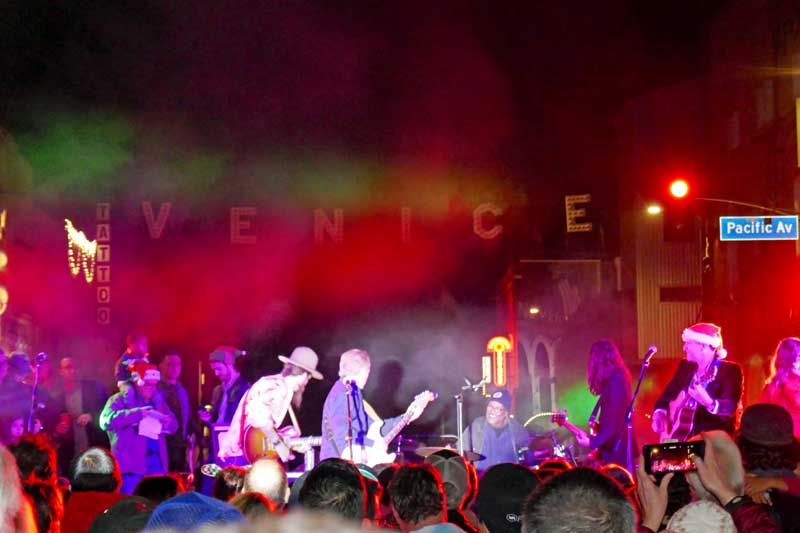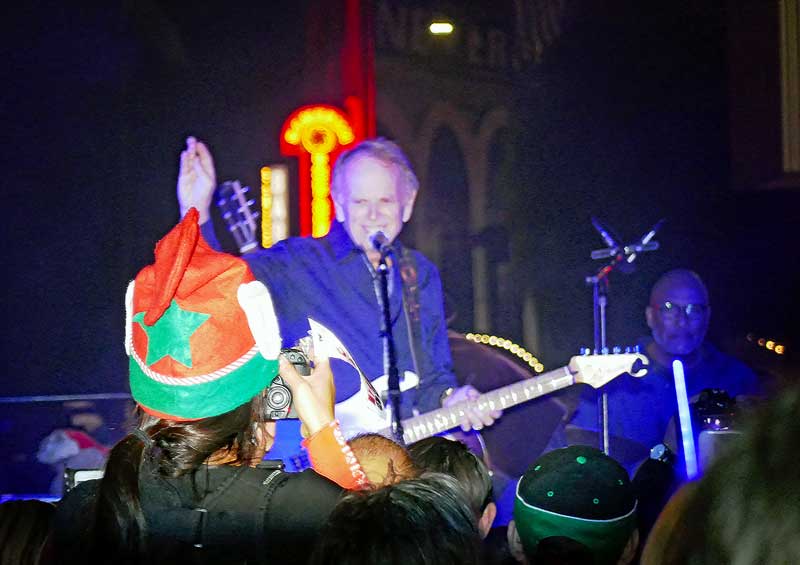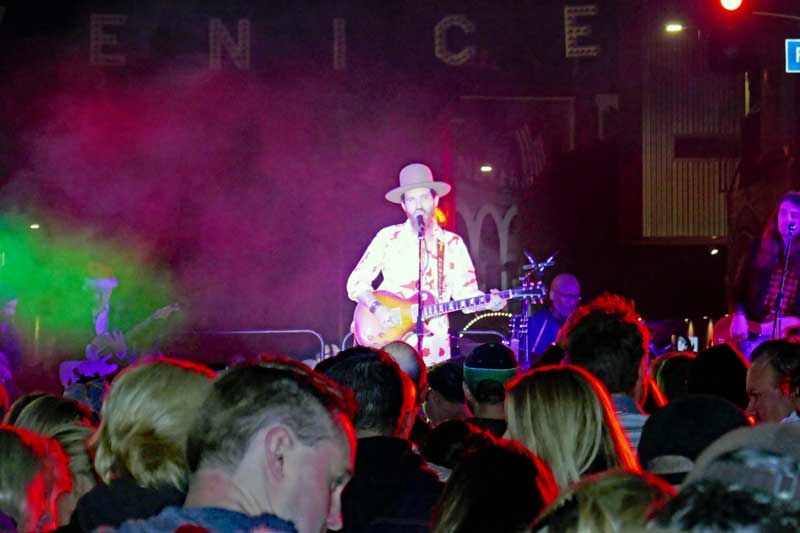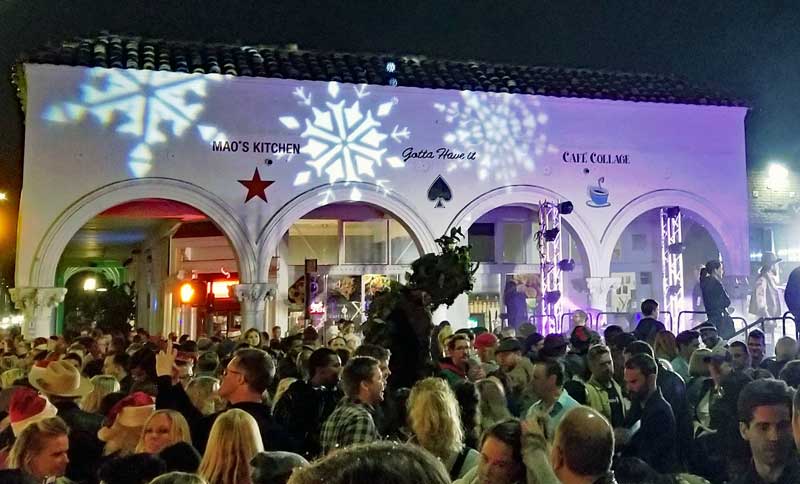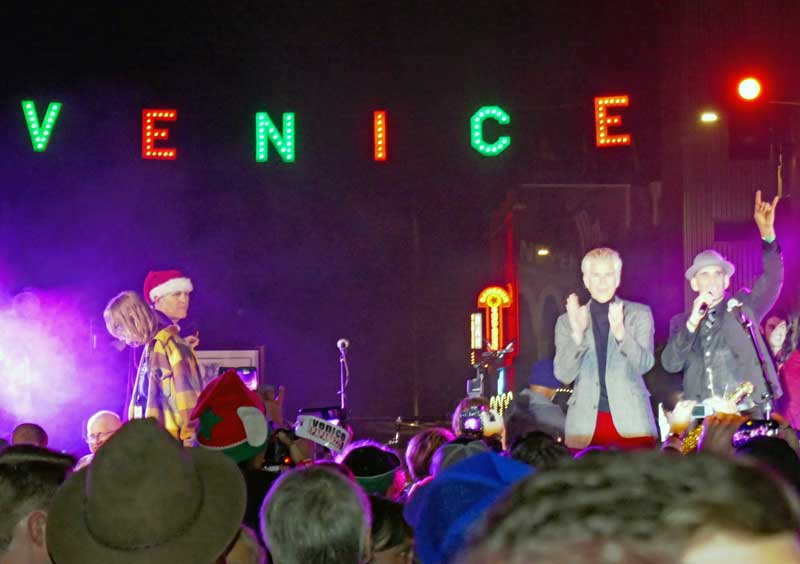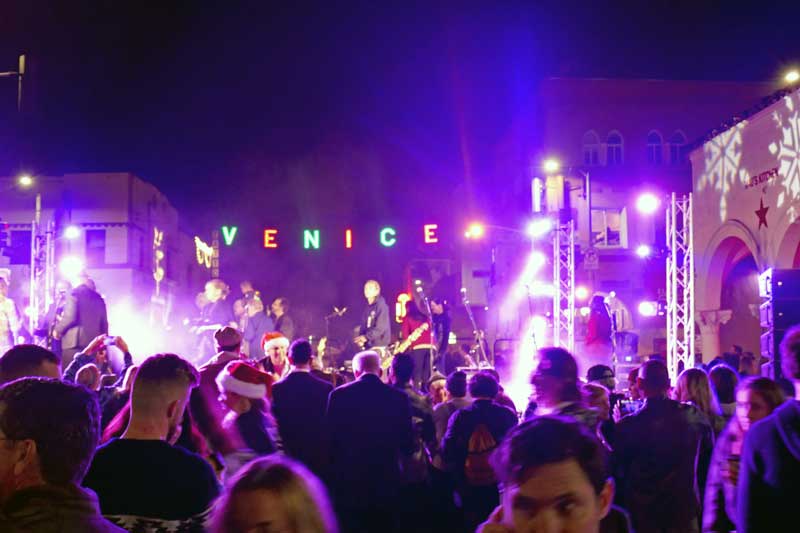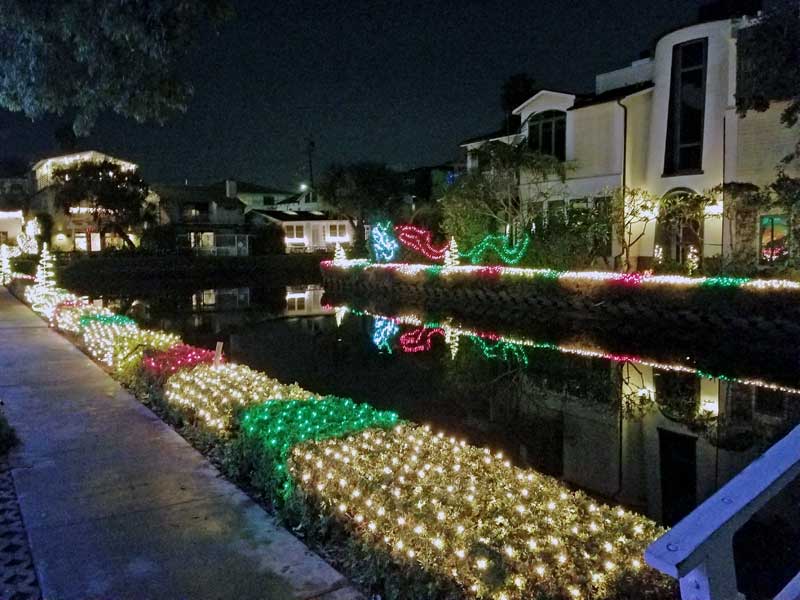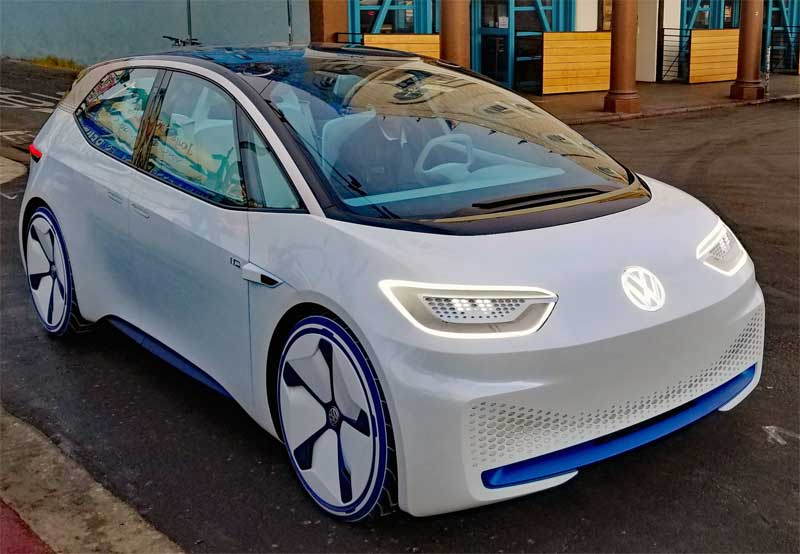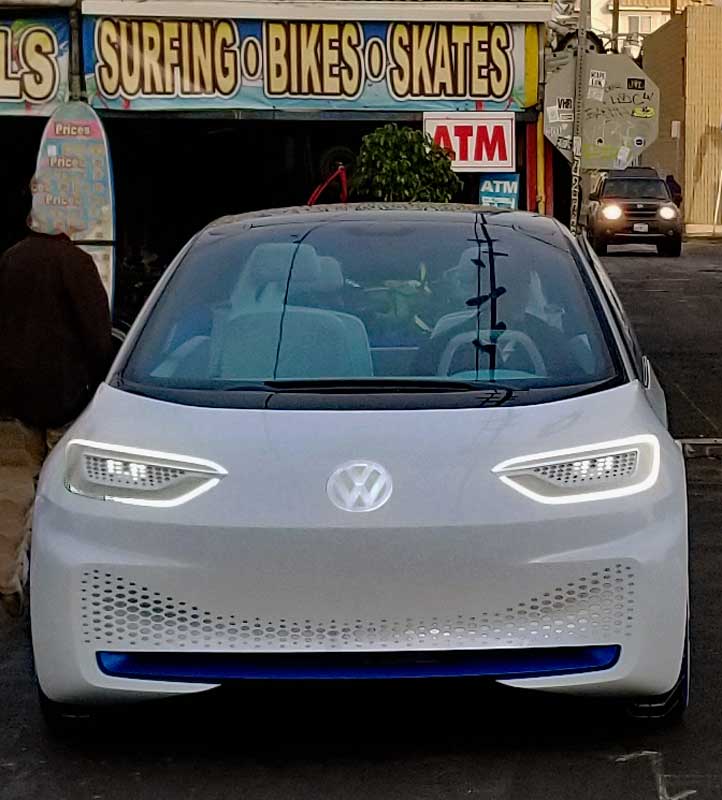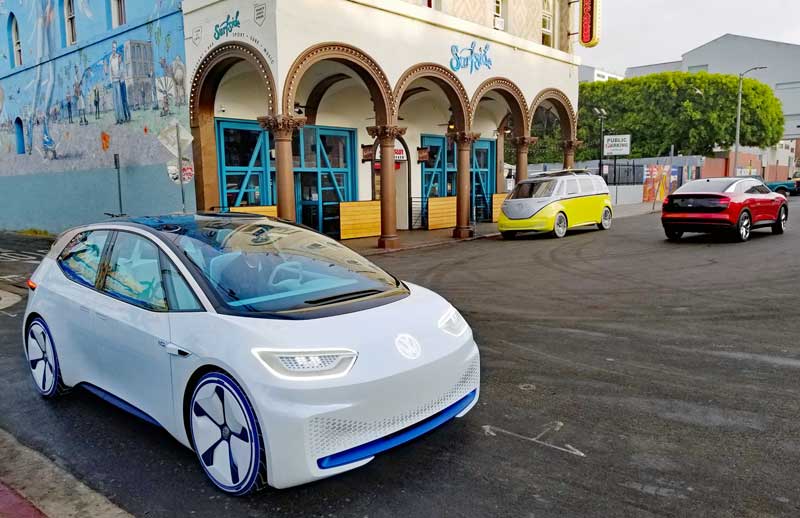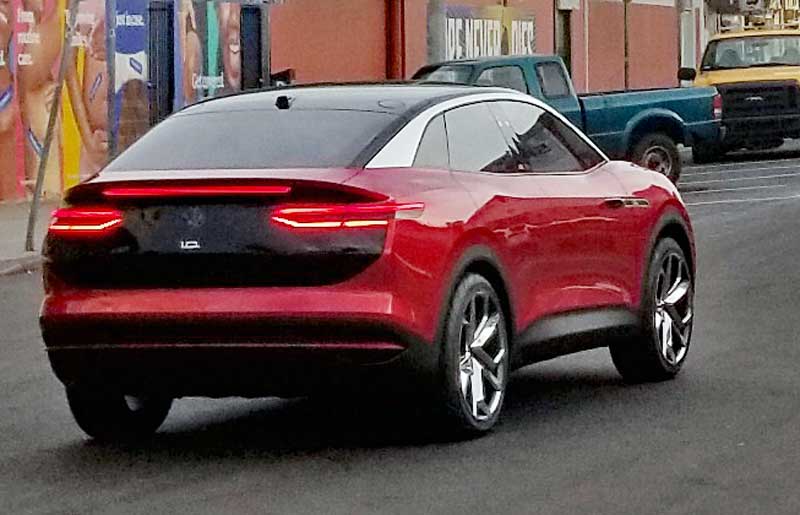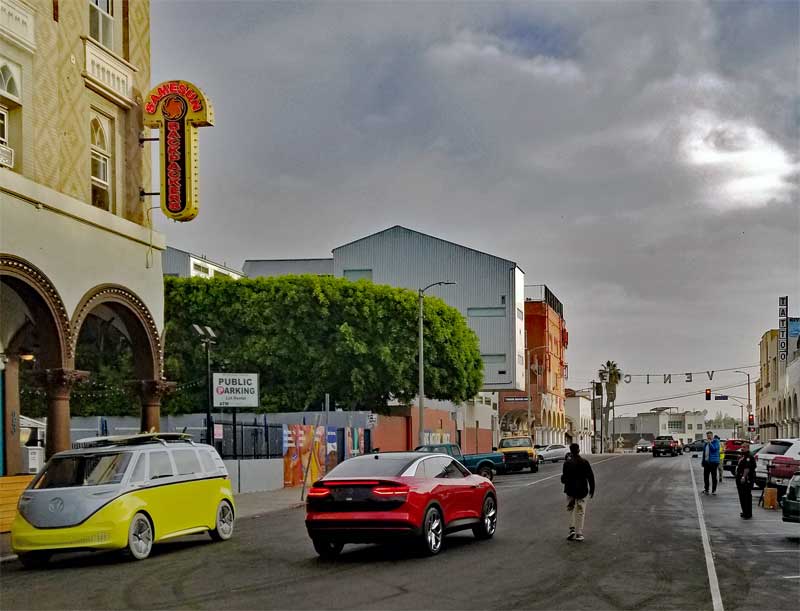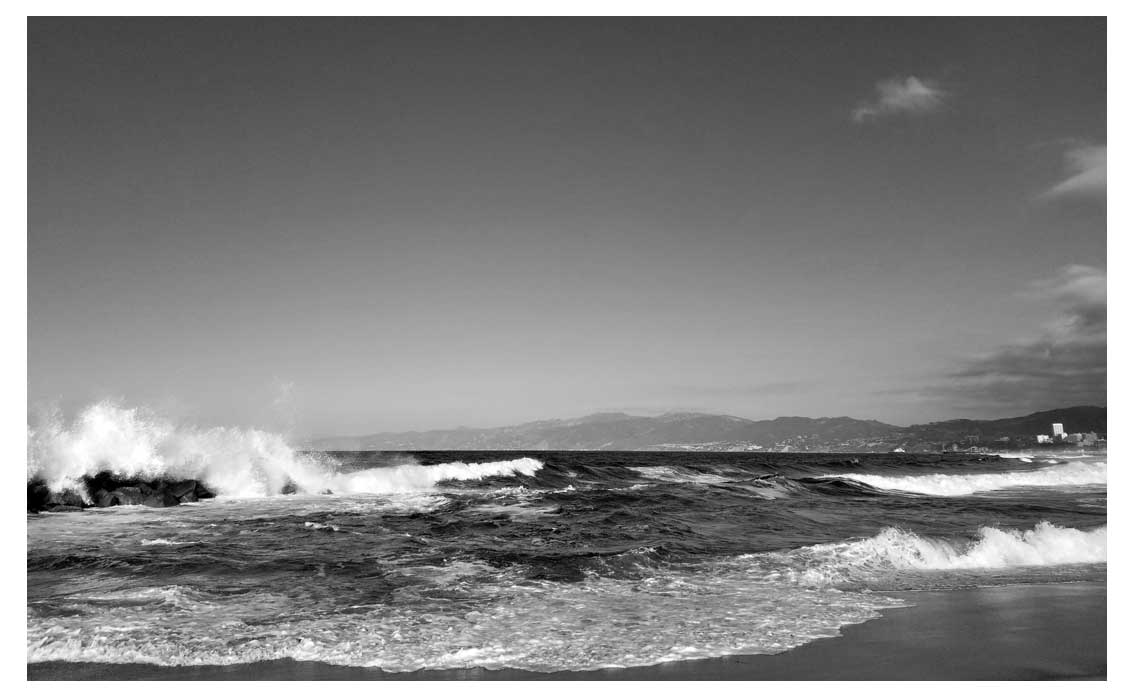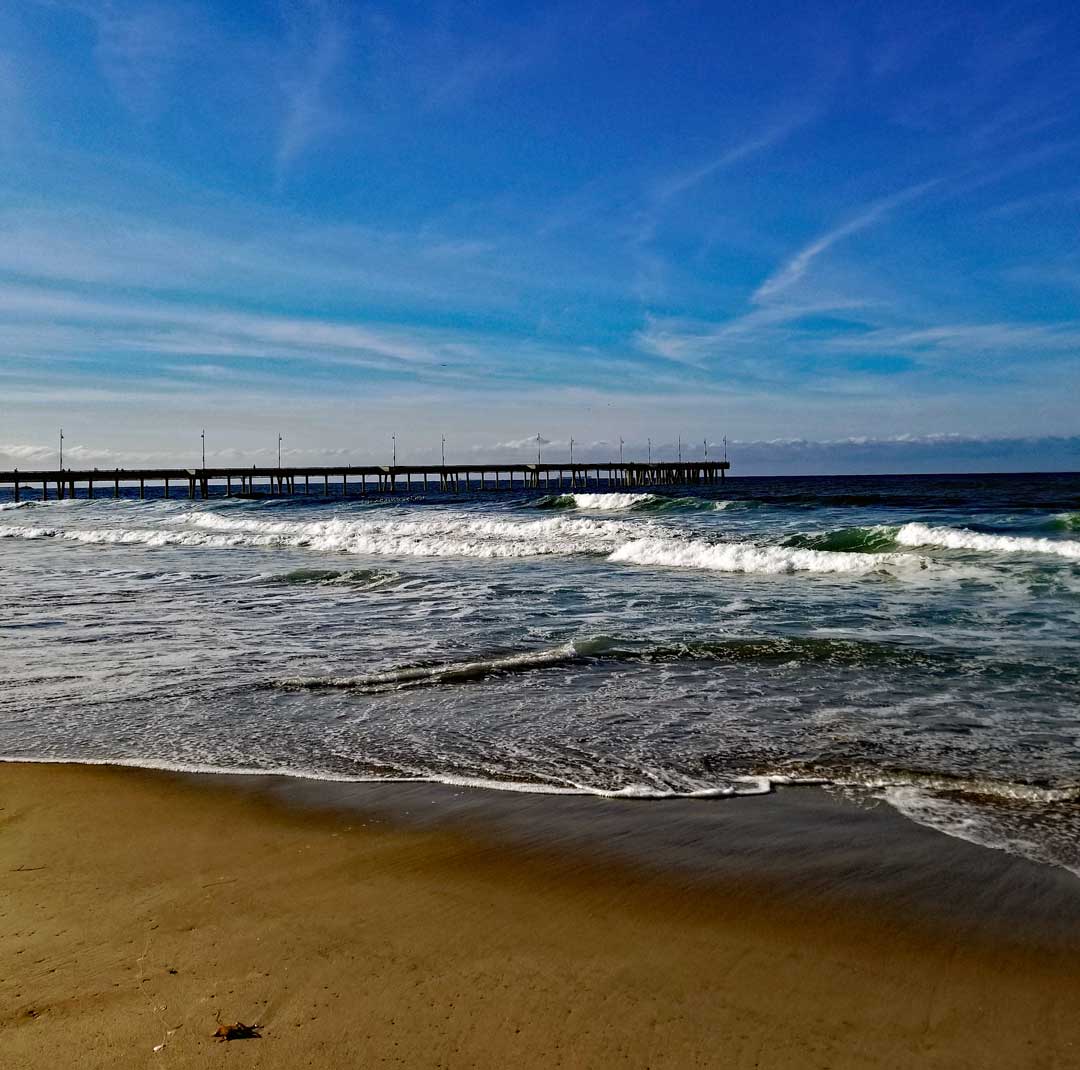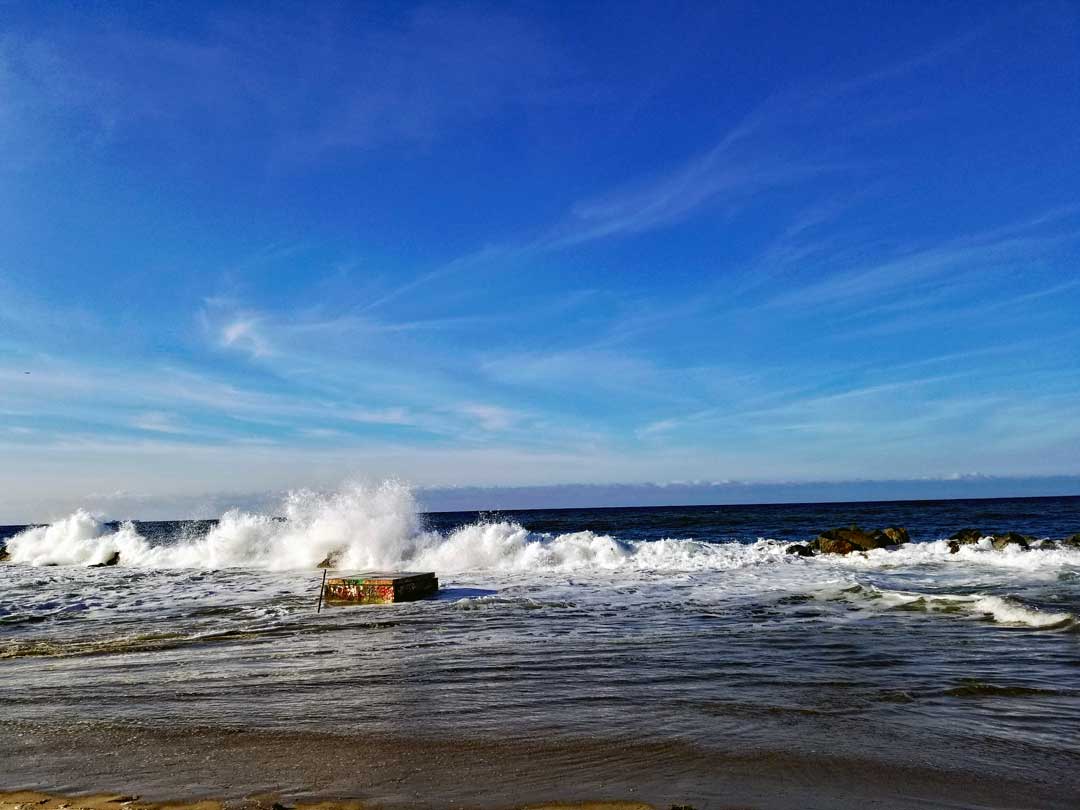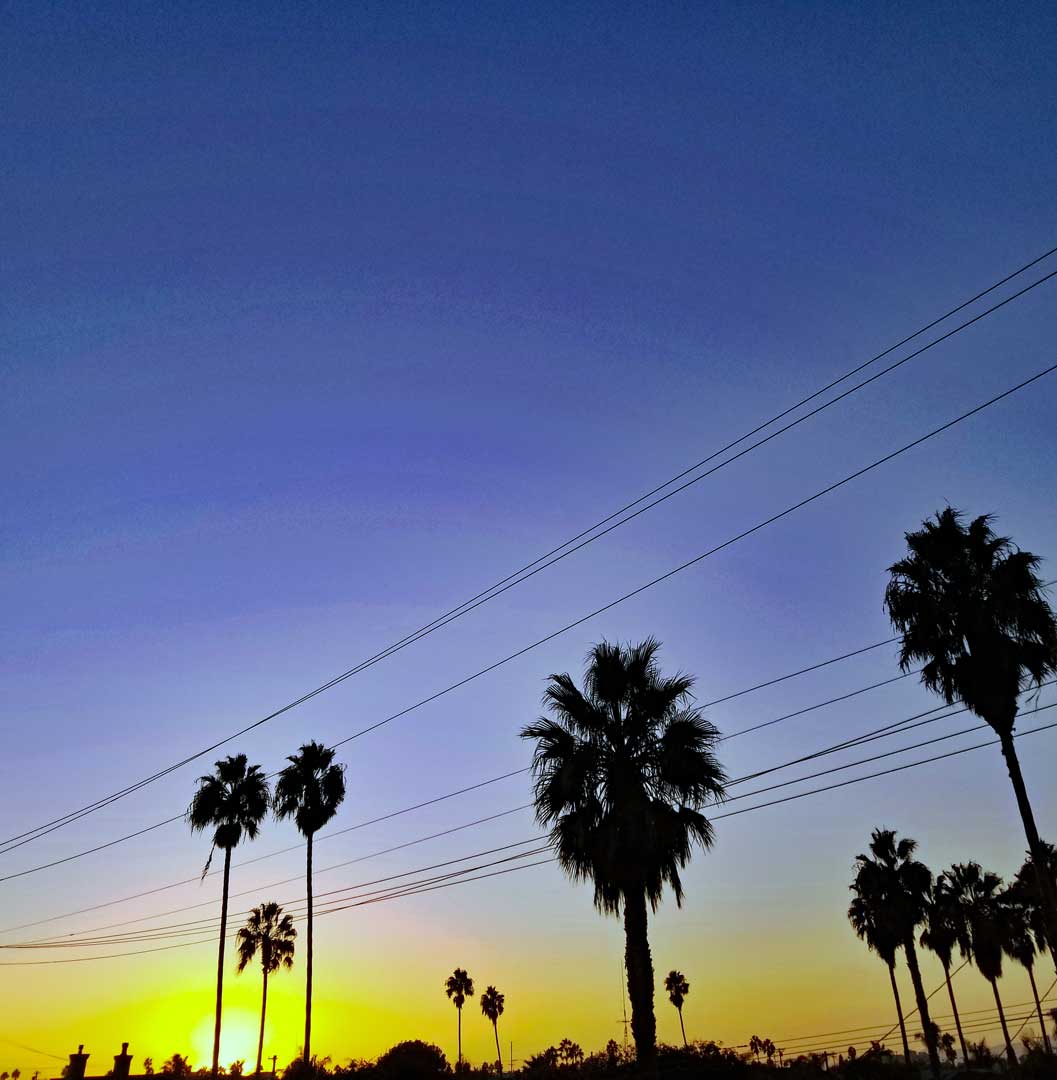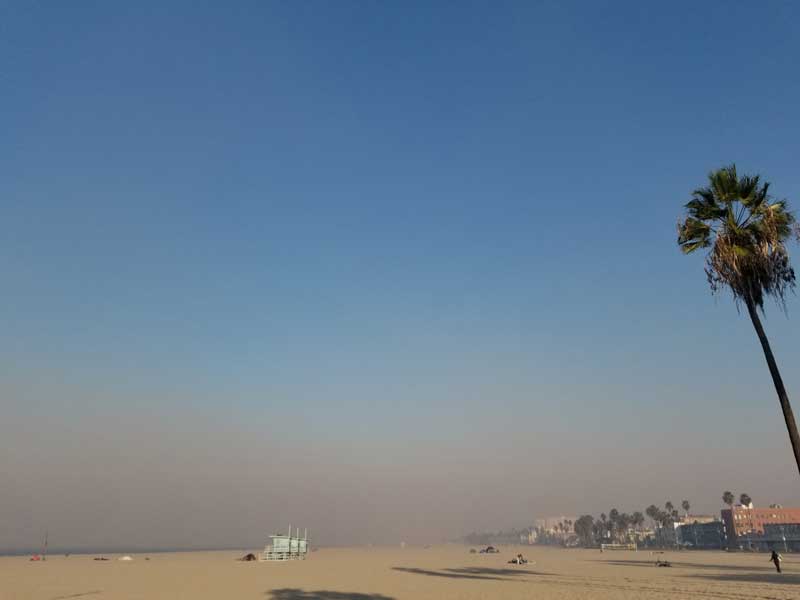
Tuesday 12/5/2017
9:00 The Thomas fire which is the largest fire currently burning in Ventura county has so far at 9:00 burned 45,000 Acres and the smoke is thick all around the coast in Venice and surrounding areas. So far 27,000 people have been evacuated from their homes. Santa Paula has been hit hard by the fires and many people are out of their homes and homes have been lost. The strong Santa Ana winds we are currently having are a big factor in the spread of these fires. The fire started at 18:00 hours yesterday on Monday 12/4 2017 and is still burning strong.
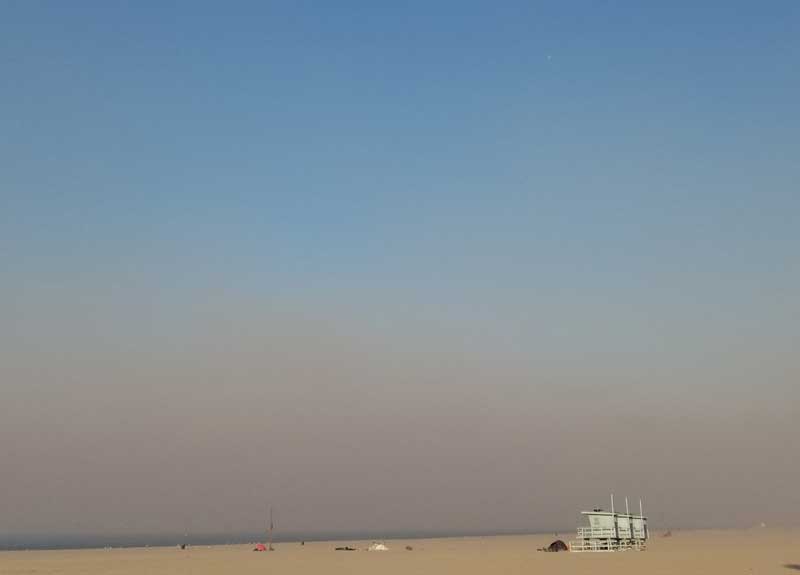
12/5 12:40 Governor Jerry Brown just declared a state of Emergency in Ventura County as a result of the rapidly spreading fires. The Thomas fire is now at 50,000 acres burned with 150 homes destroyed. Likely this number will change significantly upward as soon as an accurate tally can be taken. There are a total of five large fires currently burning in Southern California and the Thomas fire in Ventura county is the largest one. Water has run dry in the fire hydrants in some areas and nothing can be done to fight the fires and protect structures without water.
12/5 13:15 Thomas fire 0% containment 1,000 plus firefighters battling the flames.
Wednesday 12/6/2017
9:30. Fires are still burning in both Ventura and LA counties. The Thomas fire has burned 55,000 acres and is at 0% containment. There is now a fire burning in the Sepulveda pass that has shut down the 405 freeway fully at times and right now NB lane between the 10 Freeway and Mulholland. Southbound 405 all offf ramps closed from Mulholland to Sunset. Earlier there were worries that the Getty center could potentially be in the fires path, although at this point it seems that those worries are not as big anymore. The Getty center is closed due to the fire.
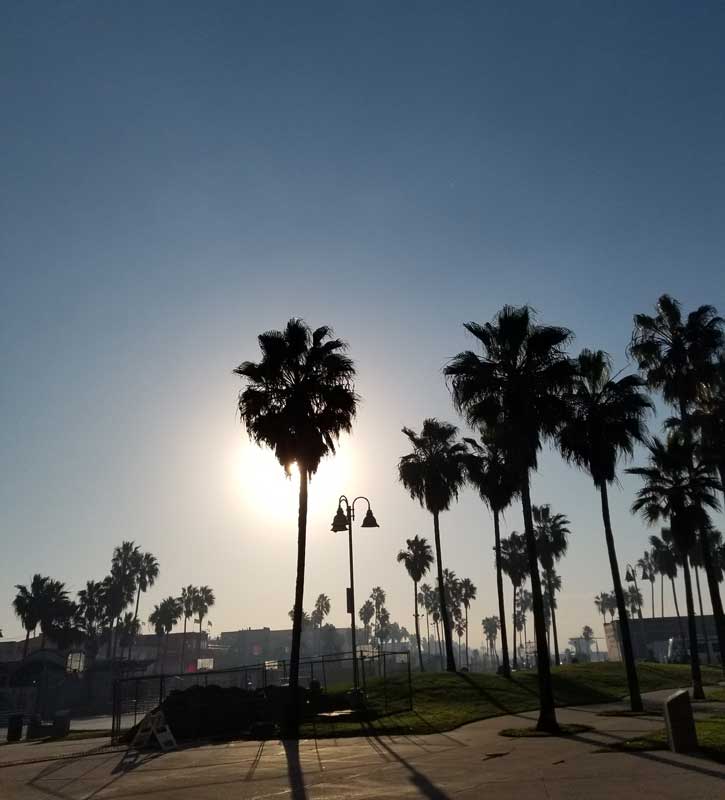
13:00 The Skirball fire in the Sepulveda pass/Bel Air has now spread to 150 acres and is at 0% containment. So far at least 4 homes has been destroyed in this fire. Many schools in the larger LA and Ventura counties are closed and people are being advised to stay indoors to avoid the air that is full of smoke and particles from the fires.
In the Bel Air fire of 1961 some 500 homes were destroyed and the fire prompted several code changes, such as requiring brush clearance around homes in areas where fire danger is high and eventually a city wide ban on wood shingle covered roofs.
The Thomas fire in Ventura county has now grown to 65,000 acres and it is still the largest fire burning in the area.
14:00 The Thomas fire is at 65,000 acres with 0% containment.
Winds are currently calm and it is being predicted that they will stay that way for another 6-8 hrs or so, which would mean that firefighters have until 20:00 – 22:00 tonight to try to get the fires under some containment before the winds start increasing again.
The projections for weather tomorrow Thursday 12/7/2017:
Red flag conditions are projected for this entire week. Temperature 75℉, 4% relative humidity and wind speed is 33mph out of the NE. Brush burning index is at 296 which is an extremely high number and the highest that LA City Fire Chief Ralph Terrazas has ever seen.
LAUSD is closing 265 schools due to the poor air quality in many areas due to the fires, all schools in the san Fernando valley will be closed and some schools in other areas as well, go here for a list of all closures.
16:30 The Creek fire in Sylmar has burned 11,377 acres and is now 5% contained. 29 horses have been killed and 110,000 people has been evacuated.
The Thomas fire is still at 65,000 acres but winds are expected to pick up again tonight and reach new heights. So far 50,000 people have been evacuated, 150 homes destroyed and over 12,000 are threatened by the fire.
21:30 The Thomas fire in Ventura county has now grown to 90,000 acres burned and 27,000 people evacuated.
22:00 The Skirball fire has so far destroyed 4 homes and damaged another 11 homes, this fire is now at 475 acres burned. The area on the West side of the 405 in the Sepulveda pass has now been designated as a “Ready to go area”, which means that people has to be packed and ready to get in their cars and go immediately upon notice.
Thursday 12/07/2017 08:30
The fires are still burning in Southern California. Winds are currently a bit calmer in most areas, but are expected to pick back up again later today.
Creek fire in Sylmar – is at 12,605 acres burned and is now 10% contained. At least 30 structures have been destroyed and 30 horses have died so far in this fire, 2,500 structures are still threatened.
Thomas fire in Santa Paula – is at 96,000 acres burned and it is 5% contained. Ojai is now under evacuation order.
Skirball fire in the Sepulveda pass is at 475 acres burned and is 5% contained.
Rye fire near Santa Clarita has burned 7,000 acres and is 15% contained.
405 freeway is now open in both directions although some on/off ramps remain closed.
18:00
Red flag warning in effect until Sunday evening.
Thomas fire currently has burned 115,000 acres and containment is at 5%. In the city of Ventura proper 427 structures have been destroyed and 85 structures have been damaged. In unincorporated areas, 12 structures destroyed and 0 structures damaged.
Creek fire is at 10% contained and more progress is expected tonight in containing the fire. 15 structures destroyed and 15 damaged evacuation order has mostly been lifted for the area.
Skirball fire 475 acres burned and 4 structures destroyed and 12 damaged, fire is 20% contained. Evacuation orders have been lifted and many roads are open.
Rye fire has burned 7,000 acres and is now 25% contained.
22:00
Thomas fire is at more than 115,000 acres burned and has now reached Fillmore causing evacuation orders for the area. The number of homes destroyed and damaged are rising rapidly, currently it is estimated at more than 500 structures either damaged or destroyed.
A new fire is now burning in San Diego county. The Lilac fire has burned 4,100 acres and many structures have been destroyed. All in all there are now 6 different fires burning in Southern California.
Liberty fire in Murrieta is at 300 acres and is 10% contained.
Creek fire has burned over 15,000 acres and is now at over 20% containment. The higher winds that we’re predicted for the day in the area never materialized and this helped in achieving better containment.
The weather forecast is for winds increasing as compared to earlier tonight. In general though, the wind speed is lower than what it has been the last few days. This fact should help in reaching higher levels of containment over the next few days.
Friday 12/8 2017
8:00
Thomas fire has now burned 132,000 acres and is 10% contained.
Rye fire has burned 6,049 acres 35% contained.
Creek fire has burned 15,323 acres and is 40% contained.
Skirball fire has burned 475 and is 20% contained.
Lilac fire in San Diego has burned 4,100 acres and 65 structures destroyed 0% contained.
Liberty fire in Murrieta has burned 300 acres and is 10% contained.
13:30
Thomas fire 132,000 acres burned 10% contained.
Rye fire 6,049 acres burned, 35% contained.
Creek fire 15323 acres burned 40% contained.
Skirball fire 475 acres burned, 30% contained. 6 homes have been destroyed and 12 damaged. 1 firefighter has been hurt.
Lilac fire 4,100 acres burned, 0% contained.
Liberty fire 300 acres burned 60% contained.
Saturday 12/9/2017
10:00
The Santa Ana winds have died down as of now and there is progress being made on containment of all currently burning fires in Southern California. We can expect to see much improved containment numbers by the end of the day. The air quality is still poor in many areas and people are encouraged to limit outdoor activities or to avoid them if you have a higher sensitivity to air pollution or have health issues.
17:00
Thomas fire 148,000 acres burned 15% contained.
Rye fire 6,049 acres burned, 65% contained.
Creek fire 15,619 acres burned 80% contained.
Skirball fire 421 acres burned, 75% contained.
Lilac fire 4,100 acres burned, 20% contained.
Liberty fire 300 acres burned 90% contained – expected full containment by tonight.
Sunday 12/10 2017
9:00
Winds are currently calm in most areas but the fire weather warning is in effect until Monday 20:00.
Thomas fire 173,000 acres burned 15% contained.
Rye fire 6,049 acres burned, 90% contained.
Creek fire 15,619 acres burned 90% contained.
Skirball fire 422 acres burned, 75% contained.
Lilac fire 4,100 acres burned, 60% contained.
Liberty fire 300 acres burned 100% contained.
17:00
Thomas fire still growing, now at 200,000 acres burned 15% contained. Additional evacuations has been ordered in Ventura and Santa Barbara counties, including Carpinteria and Montecito. Evacuations has been lifted in Santa Paula.
The other fires are all close to or fully contained at this time.
21:00
Thomas fire has now grown to 230,000 acres and the containment number has actually dropped due to the rapid growth and stands at 10% at this time. This fire is the 5:th largest ever in California and 800 structures have been destroyed with another 18,000 threatened.
Rye fire 6,049 acres burned, 93% contained, full containment expected by Friday.
Creek fire 15,619 acres burned 95% contained. Full containment expected by tomorrow.
Skirball fire 422 acres burned, 85% contained. Evacuation orders lifted roads open again.
Lilac fire 4,100 acres burned, 75% contained.
Tuesday 12/12 2017
13:00
Thomas fire has burned 234,200 acres and is 20% contained.
Rye fire 6,049 acres burned, 96% contained, full containment expected by Friday.
Creek fire 15,619 acres burned 98% contained. Full containment expected by tomorrow.
Skirball fire 422 acres burned, 85% contained. Evacuation orders lifted roads open again.
Lilac fire 4,100 acres burned, 92% contained.
Wednesday 12/13 2017
13:00
Thomas fire has burned 237,000 acres and is 25% contained. It is still burning strong and is now threatening the communities of Santa Barbara and Montecito.
Thursday 12/14 2017
22:00
Thomas fire has burned 249,500 and is now 35% contained. Red flag warning is in effect until tomorrow 10:00. One firefighter was tragically killed today fighting the Thomas fire in the Fillmore area. This fire according to fire authorities “May take weeks to reach full containment for.”
Rye fire 6,049 acres burned, now 100% contained.
Creek fire 15,619 acres burned 98% contained. No update since 12/14 11:41.
Skirball fire 422 acres burned, 85% contained. No update since 12/13 19:00.
Lilac fire 4,100 acres burned, 98% contained.
Saturday 12/16 2017
22:00
Thomas fire continues spreading and growing. It is now the third largest fire ever in California, has burned 267,500 acres and destroyed more than 1,000 homes. The fire is now threatening the communities of Montecito and Santa Barbara. It is only 40% contained.
Sunday 12/17 2017
22:00
Thomas fire has now burned 270,000 acres, and it is curreently 45% contained. Some 750 homes has been destroyed. Winds are set to subside by tomorrow evening.

